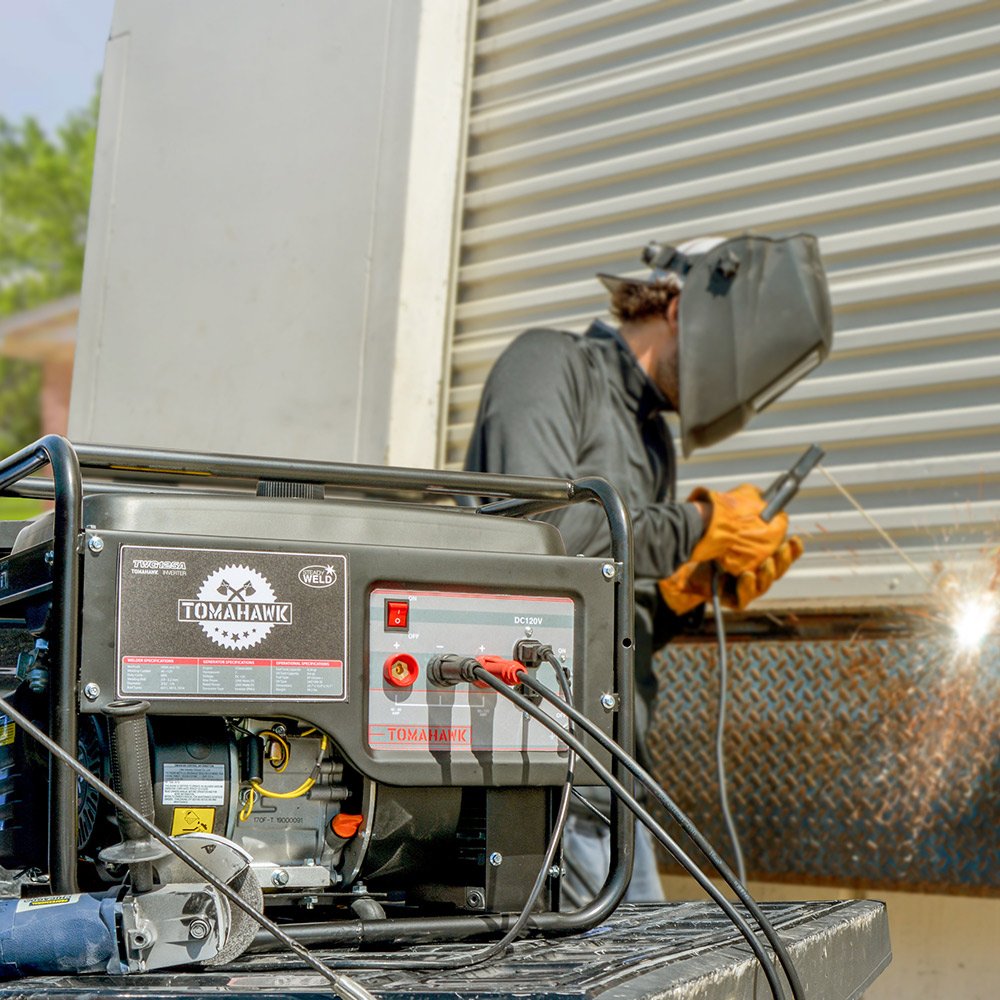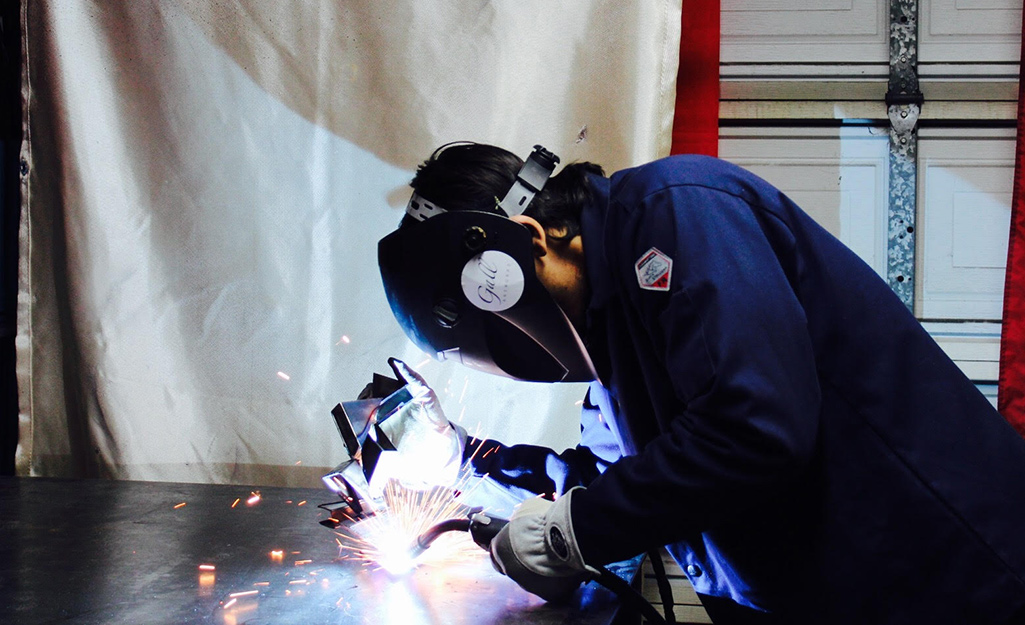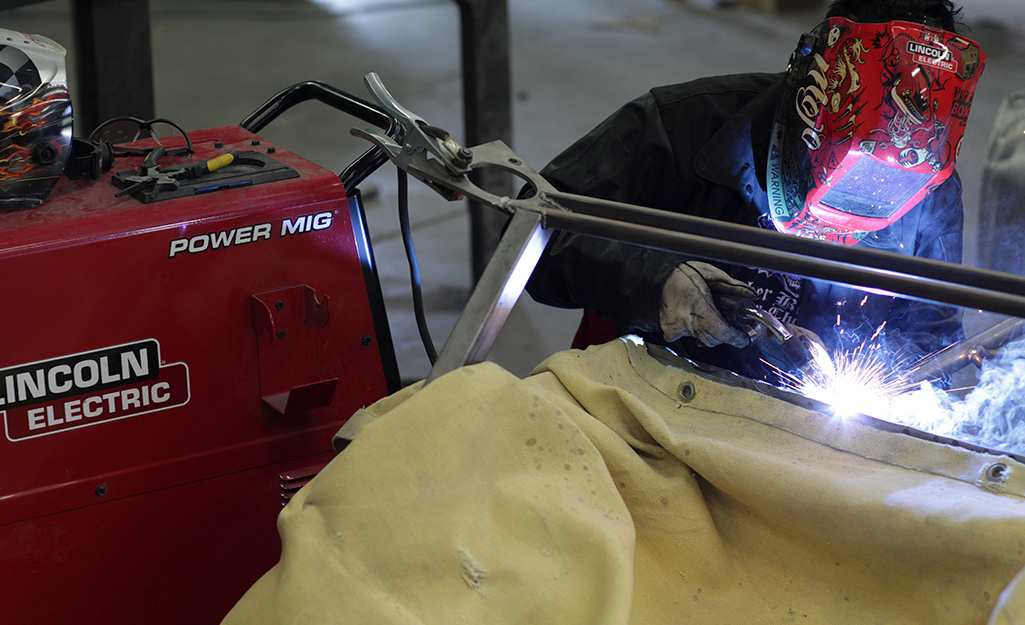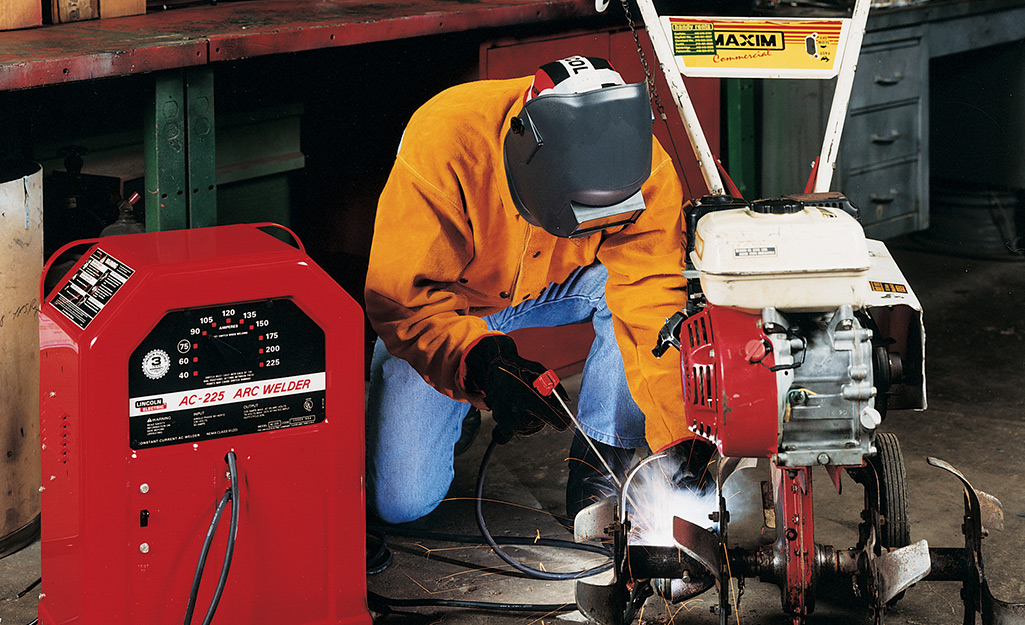Types of Welding

Last updated September 7, 2023
Welding is one of the most popular techniques used in construction and manufacturing because of the strength of the finished product. This guide introduces you to eight different types of welding and their different uses.
Table of Contents
What Is Welding?
Types of Welding
Less Common Weld Types
What Is Welding?

Welding is a metal-bonding and metal-shaping technique. It fuses materials together using heat and pressure. Welding doesn’t just bind materials together, but actually transforms them into one stronger piece of material.
Welding requires special skills, but not all states require welders to have a license. It can also be dangerous since high heat is involved.
Always keep safety supplies on hand. Wear protective clothing, gloves and a welding helmet when working on your project.
Types of Welding

To weld materials, a welding torch or gun is used to apply extreme heat or pressure to bond two materials. Some types of metal, plastic and even wood can be welded together.
There are four common types of arc welding used in construction and manufacturing jobs.
Metal Inert Gas welding (MIG) is a type of welding that uses a shielding gas. This gas flows along the wire electrode to heat up. Then it joins two metals with a filler metal. The filler metal is fed through the welding gun, while a shielding gas is expelled around it. This protects the weld from contamination. Also called Gas Metal Arc Welding (GMAW), this type of welding requires a constant voltage and direct current power source. It's not recommended for outdoor use.
MIG welding has a variety of heavy-duty uses. It's used in the manufacturing, automotive, industrial and construction industries. It's a quick and efficient way to weld different types of metal at different thicknesses. MIG welding is also one of the easiest types of welding to learn. Most beginning welders start out with MIG welding.
Tungsten Inert Gas (TIG) welding is a type of arc welding that bonds metal using a tungsten electrode. As a filler metal is heated, argon or helium gas is expelled around it as a shield. Autogenous welds are the only type of TIG welding that doesn’t use a filler material.
Also called Gas Tungsten Arc Welding (GTAW), TIG welding relies on welding rods that are directed into the weld puddle. This is different from MIG welding, which relies on a wire feed. TIG welding is one of the few types of welding that can be done without using filler metal.
TIG welding has a variety of applications in the automotive, aerospace, shipping and construction industries. This is because of its clean, smooth and precise finish. It’s an ideal weld for repairing damaged parts. However, TIG welding is one of the more difficult types of welding to learn. It's generally not suitable for fieldwork. It also requires two hands, one to feed the rod and the other to hold the TIG torch. TIG welding works with most conventional metals such as aluminum, copper alloys, nickel alloys, titanium and steel.
Stick welding, or Shielded Metal Arc Welding (SMAW), is the traditional process of using welding sticks or rods as a filler metal to bond metals. During the welding process, a current forms between the electrode and adjoining surfaces. This creates a gas cloud that heats up and shields the metal from oxidation. Stick welding does require some cleanup since the gas that settles on the metal as it cools forms slag.
Stick welding is more affordable than other types of welding. It's frequently used in field repair, mining, construction and manufacturing processes. Stick welding can be done outdoors, even in the rain.
Flux welding, also known as Flux-Cored Arc Welding (FCAW), is an alternative to shield welding. Similar to MIG welding, the filler metal is fed through the welding gun. The difference is flux welding uses a tube-shaped wire instead of a solid one. Because of the shape of the wire, shielding gas is not necessary.
Flux welding is efficient and requires little clean up. It works well for outdoor welding and general repair work. Flux welding is often used in shipbuilding construction and manufacturing.
Less Common Weld Types

There are several less common weld types used for specialty work.
Plasma Arc Welding:
- Plasma Arc welding, similar to GTAW, is a precise technique that uses a smaller arc at higher temperatures to melt base metals. This type of welding doesn’t use filler metals and works well in severe temperatures. Plasma Arc welding is used in the airline industry.
EBW Laser Welding:
- Electron Beam Welding (EBW), or laser welding, is an extremely precise type of welding. The precision makes it useful in the shipbuilding, automotive and aerospace industries. Because of the vacuum-based nature of EBW, it is a safe weld for emergency work.
AHW:
- Atomic Hydrogen Welding (AHW) is an older technique that is not as efficient and effective as new forms of welding. This extremely high-heat form of welding uses hydrogen gas to shield tungsten electrodes. It can be performed with or without filler metals. MIG welding has replaced the AHW process in most industries.
Electroslag:
- Electroslag is a fast way to bond heavy metals for use in machinery and other industrial equipment.
Virtually every industry relies on welding to create or repair materials and products. Before starting your next welding project, check out The Home Depot Mobile App to stock up on supplies.



































